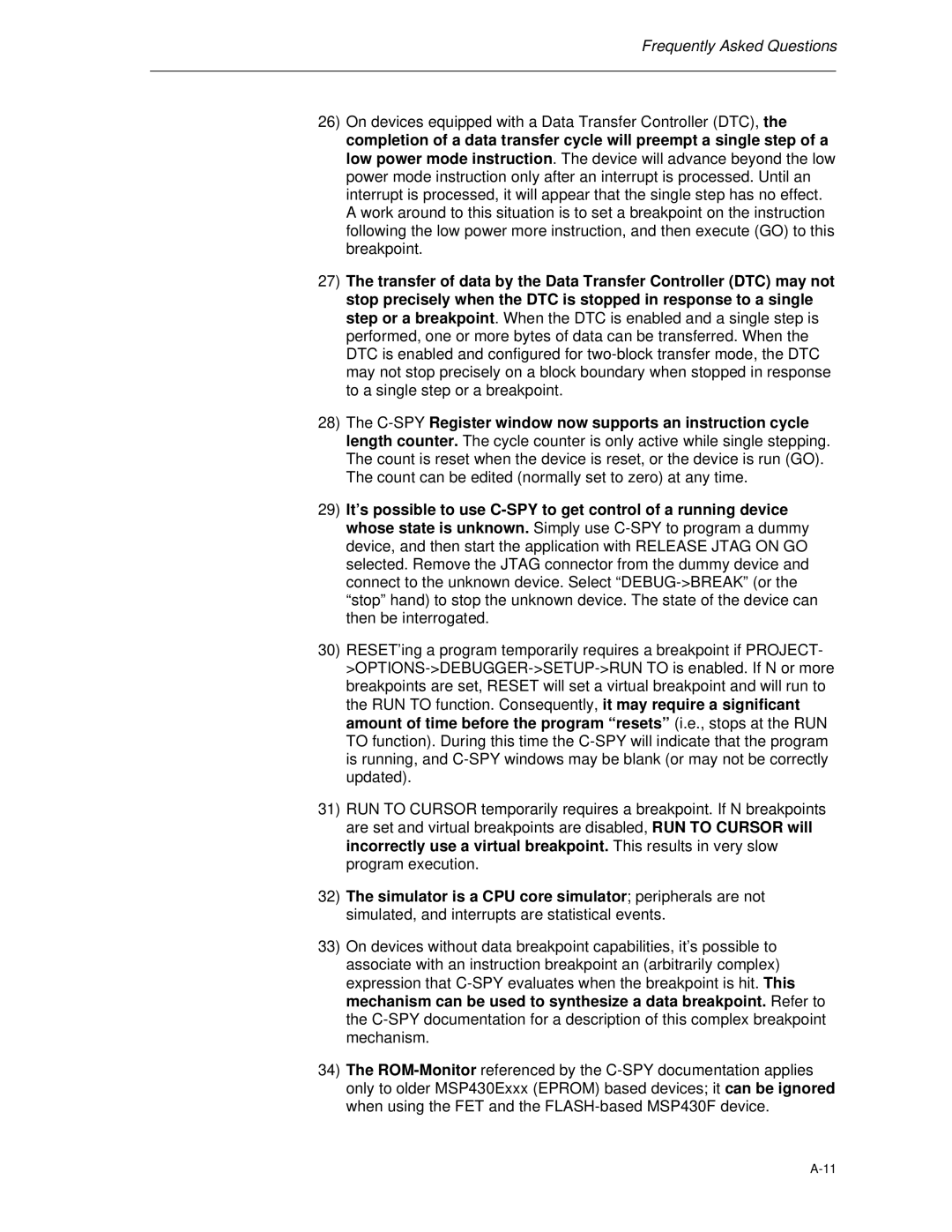Frequently Asked Questions
26)On devices equipped with a Data Transfer Controller (DTC), the completion of a data transfer cycle will preempt a single step of a low power mode instruction. The device will advance beyond the low power mode instruction only after an interrupt is processed. Until an interrupt is processed, it will appear that the single step has no effect. A work around to this situation is to set a breakpoint on the instruction following the low power more instruction, and then execute (GO) to this breakpoint.
27)The transfer of data by the Data Transfer Controller (DTC) may not stop precisely when the DTC is stopped in response to a single step or a breakpoint. When the DTC is enabled and a single step is performed, one or more bytes of data can be transferred. When the DTC is enabled and configured for two-block transfer mode, the DTC may not stop precisely on a block boundary when stopped in response to a single step or a breakpoint.
28)The C-SPYRegister window now supports an instruction cycle length counter. The cycle counter is only active while single stepping. The count is reset when the device is reset, or the device is run (GO). The count can be edited (normally set to zero) at any time.
29)It’s possible to use C-SPY to get control of a running device whose state is unknown. Simply use C-SPY to program a dummy device, and then start the application with RELEASE JTAG ON GO selected. Remove the JTAG connector from the dummy device and connect to the unknown device. Select “DEBUG->BREAK” (or the “stop” hand) to stop the unknown device. The state of the device can then be interrogated.
30)RESET’ing a program temporarily requires a breakpoint if PROJECT- >OPTIONS->DEBUGGER->SETUP->RUN TO is enabled. If N or more breakpoints are set, RESET will set a virtual breakpoint and will run to the RUN TO function. Consequently, it may require a significant amount of time before the program “resets” (i.e., stops at the RUN TO function). During this time the C-SPY will indicate that the program is running, and C-SPY windows may be blank (or may not be correctly updated).
31)RUN TO CURSOR temporarily requires a breakpoint. If N breakpoints are set and virtual breakpoints are disabled, RUN TO CURSOR will incorrectly use a virtual breakpoint. This results in very slow program execution.
32)The simulator is a CPU core simulator; peripherals are not simulated, and interrupts are statistical events.
33)On devices without data breakpoint capabilities, it’s possible to associate with an instruction breakpoint an (arbitrarily complex) expression that C-SPY evaluates when the breakpoint is hit. This mechanism can be used to synthesize a data breakpoint. Refer to the C-SPY documentation for a description of this complex breakpoint mechanism.
34)The ROM-Monitorreferenced by the C-SPY documentation applies only to older MSP430Exxx (EPROM) based devices; it can be ignored when using the FET and the FLASH-based MSP430F device.
